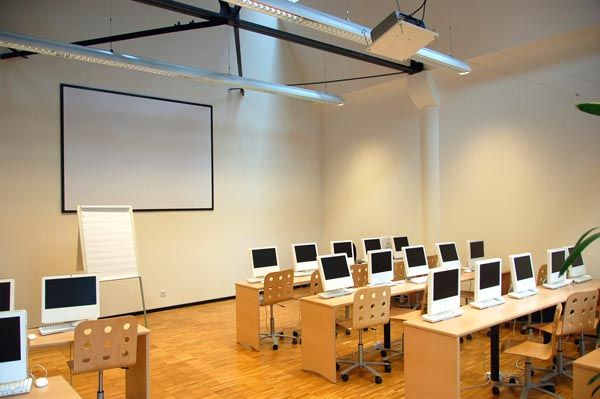The hygiene at school is particularly important as it may cause many diseases if it is inappropriate. Children at  school are at risk of catching and transmitting infections as they are highly susceptible due their immature immune system. They also have a contact with other children and share the facilities and the equipment at school with them. Cleaning, disinfecting and sanitising of school facilities is one of the measures which could be taken to prevent the transmission of diseases.
school are at risk of catching and transmitting infections as they are highly susceptible due their immature immune system. They also have a contact with other children and share the facilities and the equipment at school with them. Cleaning, disinfecting and sanitising of school facilities is one of the measures which could be taken to prevent the transmission of diseases.
Cleaning, disinfecting, sanitising
- Cleaning is one way of removing dust and dirt from surfaces. It is usually undertaken by a qualified school cleaner who scrubs the surfaces with a warm soapy water and a sponge or a cloth. The main goal from this process is the dirt to be removed, although germs might not be completely killed.
- In the disinfection process, suitable detergents are used to disinfect the surfaces which have already been cleaned. It is particularly important to disinfect small objects as well as they are usually touched with hands and are covered with germs.
- Sanitising further decrease the amount of germs and makes the school environment clean and bacteria free.
Daily cleaning
A daily cleaning of desks, window sills, door handles, floors, toilets, toys etc. is essential to maintain the overall hygiene at the school. In case a spillage happens, it is recommended to be cleaned as soon as it happens to avoid further soiling. As viruses are fragile, a standard daily cleaning should be sufficient to kill germs and protect pupil.
As young children have immature immune system, sometimes it is possible the cleaning to have a negative effect on their health. For this reason the cleaning products should be applied according to their instructions and the surfaces should be rinsed with pure water to remove the cleaning chemicals. If a surface isn’t visibly dirty, it could be disinfected with a suitable detergent which will remove any invisible dirt and kill germs. For better results, it is recommended the disinfectant to remain on the surface for a certain time before wiped down. For electronic devices like computers, keyboards and telephones, disinfecting wipes could be used for disinfection.
A very important aspect of the school cleaning is the eating area. The dishes, cutlery and tables need to be clean at all times. Table cloths and towels should be washed frequently not only to remove stains, but also to be disinfected. Floors should be vacuumed and mopped daily for disinfection and also any fallen food to be removed before it gets rotten.
Hand washing
Hand washing is one of the ways to prevent infections spreading around at schools. Pupil and teachers should wash their hands with a soap and water regularly to keep the school environment free from germs.
Waste management
The school should be equipped with bins where all rubbish should be placed. They need to be emptied regularly and the waste should be placed in the designated areas for collection by the waste management company.
If the school facilities are not maintained adequately, school may become a place where diseases could transmit easily.

